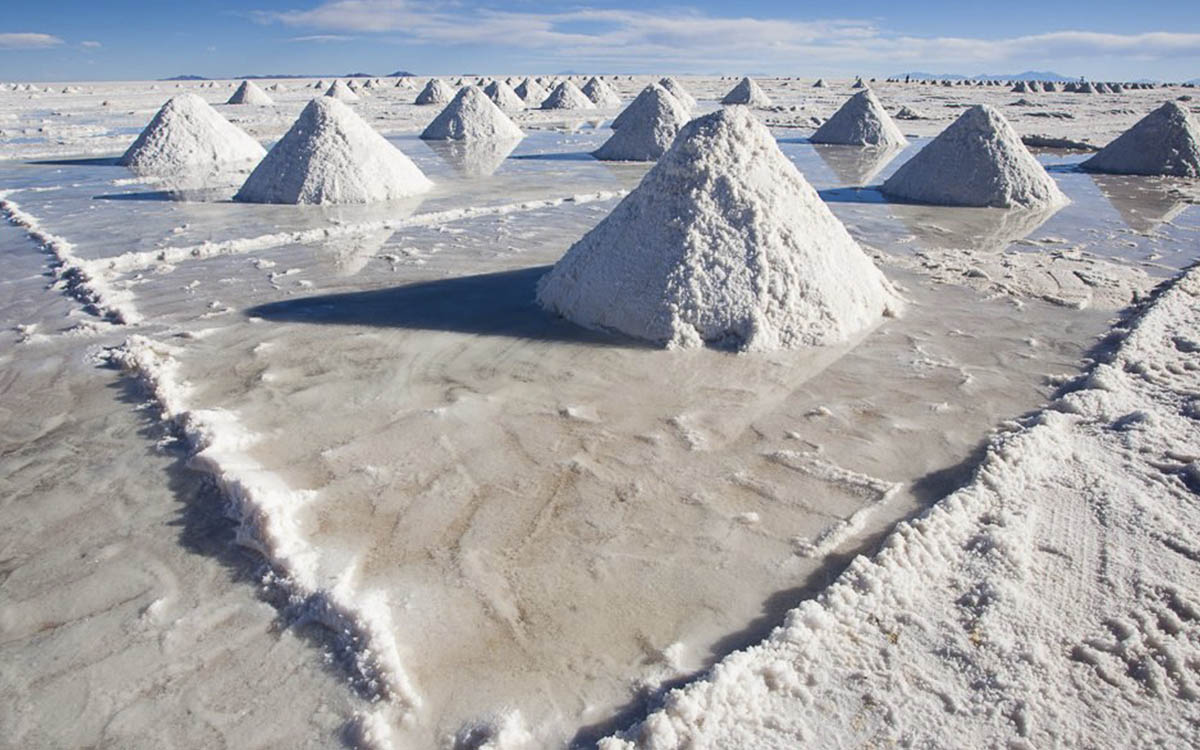The growing demand for lithium batteries to power electric vehicles has turned this chemical element into an important source of income for its main producers. Chile has one of the largest lithium reserves in the world and does not want to be just a major exporter of this material but also aspires to install the main battery manufacturing centers for electric vehicles in its territory.
Chile together with Argentina, Bolivia, Peru have around 60% of the planet’s lithium reserves, in the area known as the “lithium triangle”, formed by the Salar de Atacama in Chile, the Salar del Hombre Muerto in Argentina and the Salar de Uyuni in Bolivia. Chile being the second largest producer in the world, with 22% of global lithium reserves ranked above Australia and China for 2022. This is an important source of income for the country. Until now, it has only been able to export the raw ore to countries like China or South Korea, where most batteries are made. But for the past two years, the government has been trying to encourage manufacturers to refine and process lithium in Chile.

Lithium is a highly valued mineral, becoming in a few years the hope to replace polluting fossil fuels that are used today, such as coal or oil. Electric cars with greater autonomy could be the result of the South American process which seeks to create more independent lithium batteries with faster charging and discharging through the incorporation of new materials.
In addition to the great reduction of CO2 emitted by gasoline cars, lithium batteries are up to 30% more energy efficient than traditional batteries since they have lower energy consumption. Another advantage is that it has a much higher energy density and can store more energy, taking up less space and weighing less.
On the other hand we will run out before 2040 unless we find new reserves or a way to delay that inevitable end. The reality is that these vehicles have an expiration date and could lead us to a new crisis even worse than the oil crisis. In order to solve this problem Companies are developing a technique that promises recycled batteries that work even better than the original ones.
Chiles State organizations have signed contracts with the two mining companies that operate in Atacama. These 2 Companies must sell 25% of their production at a preferential price to companies that process lithium in Chile in order to stimulate local producers. By accepting this condition, Albemarle and the Chemical and Mining Society of Chile (SQM) obtained larger production quotas. Government expectations expect Chile to meet the growing global demand for lithium and become a leader in the sector.
“We want manufacturers to be closer to producing a complete battery in Chile… That is our dream. We don’t know if we will ever build vehicles, but we would at least like to see battery components produced in Chile, maybe even the complete battery.” – Sebastián Sichel Executive Vice President of the Government Agency for the Promotion of Production (Corfo).
Developers from Argentina, Bolivia, Chile and possibly Peru are evaluating the idea of creating an association of lithium-producing countries that would function as the mineral’s OPEC for the region.

Environmental impact
Although the production of this raw material generates benefits with a positive environmental impact with a vast reduction in CO2 emissions, its negatives must also be taken into account. Lithium production consumes water resources in desert areas. About two million liters of water are needed to produce one ton of lithium. The extraction and evaporation of brine, without the recovery of the evaporated water, obviously reduces the water inventories of groundwater and lagoons in the area. Another reason is that Lithium is pretty hard to come by. On one hand, like oil, it is not found in all regions of the world. It is also found in places whose inhabitants may not want their environment and ecosystem to be destroyed. This enormous consumption of water not only affects the surrounding ecosystems but also has a huge impact on local farmers.
A perfect example of this incident is the waters of the Liqi River (Tibet) that used to be considered a sacred zone. A toxic chemical leak from the Ganzizhou Rongda lithium mine had wreaked havoc on the local ecosystem. The river used to be full of fish. Today, there are hardly any. Hundreds of yaks and the villagers have died in the past few years after drinking river water.
As a natural process of consumption, Every mining process has an environmental impact. The priority is to find new production techniques that reduce our impact on ecosystems and thus improve the quality of human development.
